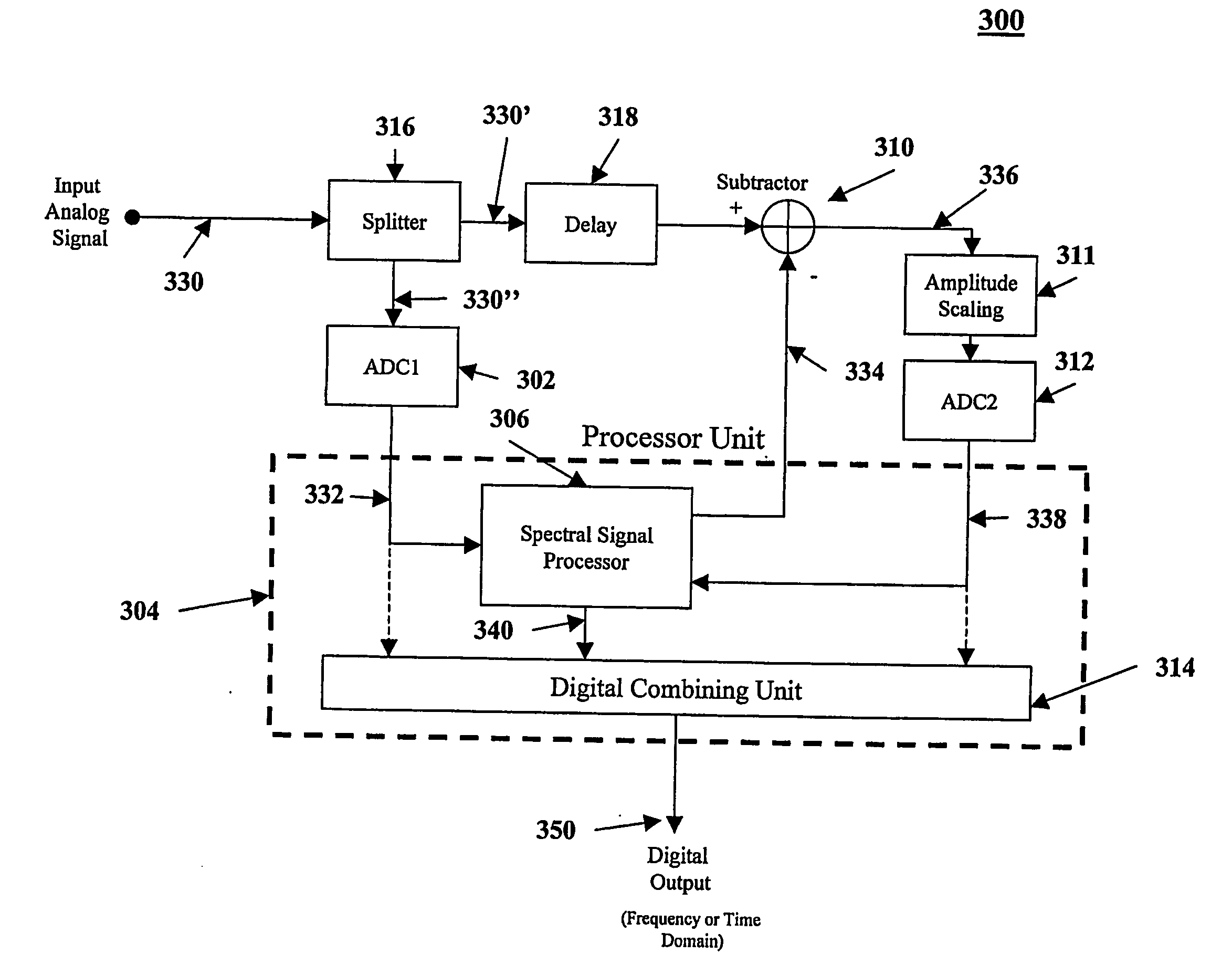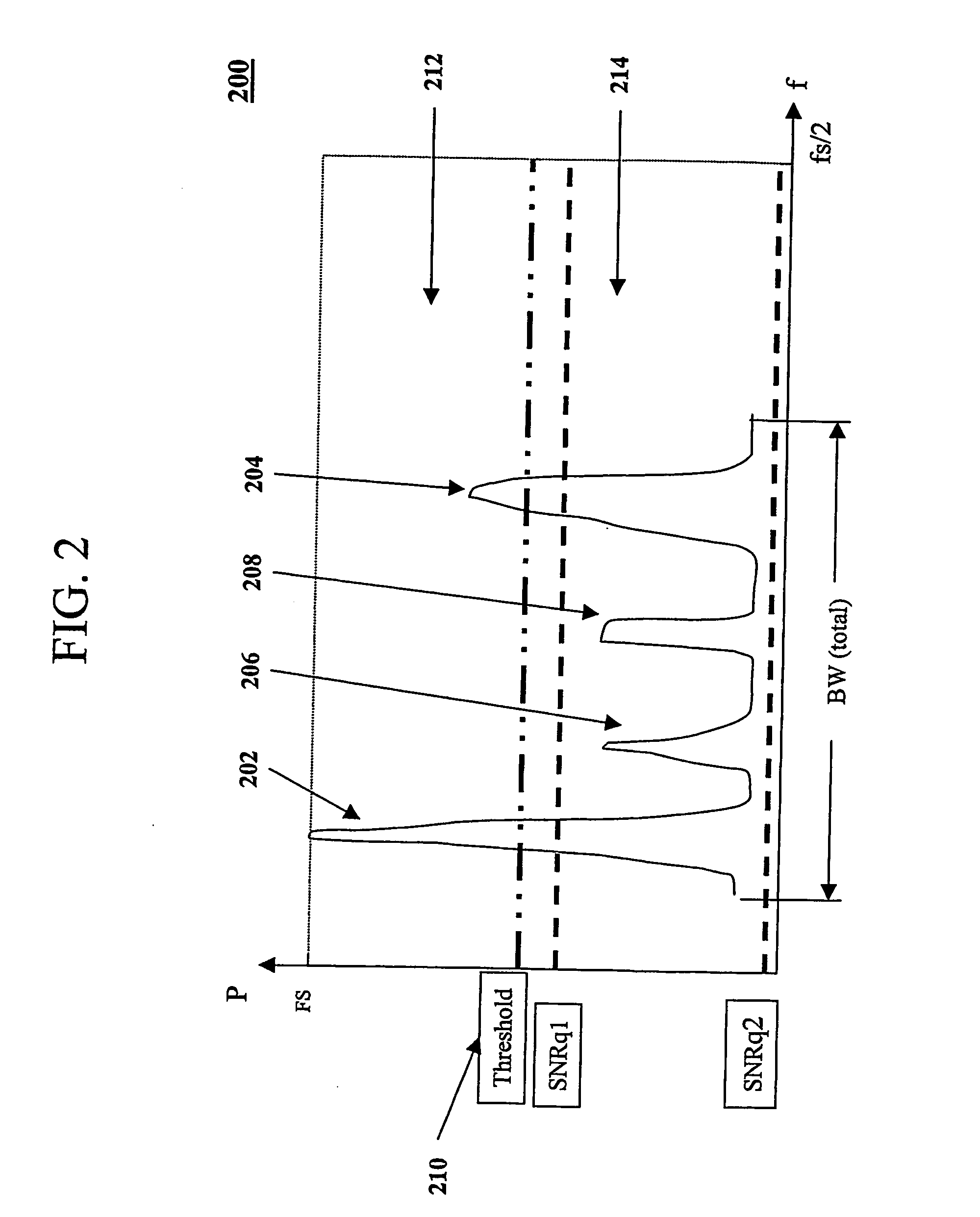Data conversion methods and systems
a data conversion and data technology, applied in the field ofsignal processing, can solve the problems of requiring an accurate analog path, limiting the resolution of the data conversion method to about 8 bits, and requiring serious “analog” bottlenecks in terms of accuracy and maximum speed of the converter, so as to reduce or eliminate critical analog circuit requirements and bottlenecks, improve dynamic range and quantization noise, and improve the effect of resolution
- Summary
- Abstract
- Description
- Claims
- Application Information
AI Technical Summary
Benefits of technology
Problems solved by technology
Method used
Image
Examples
Embodiment Construction
[0045] The present invention discloses new data conversion architectures and methods, with applications to high-speed, high-resolution ADCs and DACs. In this description, “system”, “apparatus” and “data conversion architecture” are used interchangeably. Also in the context of the present invention, the term “performance” represents the two basic data converter parameters: resolution and speed. “High-performance” means high-resolution and high. “Low performance” means low-resolution or low-speed or both. Typical exemplary ranges for “high” and “low” are given below.
[0046] In contrast with time domain concepts that serve most prior art data converter architectures, the data conversion architectures and methods disclosed herein use frequency domain tools to extract frequency domain information from the signal. This information is advantageously used in the processing of the signal, which is mainly digital.
[0047]FIG. 2 shows the basic data conversion “spectral” concept of the present ...
PUM
 Login to View More
Login to View More Abstract
Description
Claims
Application Information
 Login to View More
Login to View More - R&D
- Intellectual Property
- Life Sciences
- Materials
- Tech Scout
- Unparalleled Data Quality
- Higher Quality Content
- 60% Fewer Hallucinations
Browse by: Latest US Patents, China's latest patents, Technical Efficacy Thesaurus, Application Domain, Technology Topic, Popular Technical Reports.
© 2025 PatSnap. All rights reserved.Legal|Privacy policy|Modern Slavery Act Transparency Statement|Sitemap|About US| Contact US: help@patsnap.com



